- Home
- Museum
- Exhibitions
- Home Work Taranaki Art 2020
- Meet the Artists
- Meet the Artists
Meet the Artists
Home Work showcases the artworks for 57 local Taranaki artworks. We spent a bit of time chatting with the artists and want to share a couple of insights from each of them.
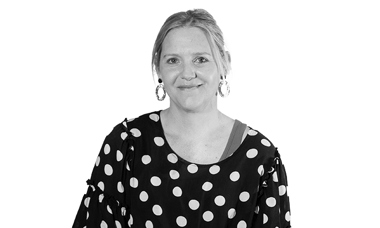
Alana Clarke
Read moreAlana Clarke

I am Taranaki born and raised! I’m currently living in New Plymouth with my partner and two daughters. I spent many years working in the design industry after graduating with a Bachelor of Design from Massey University. After living and working in Wellington and the UK I felt the pull to move back to this very special region. The past decade has seen a shift in focus from computer to canvas – to pursue my passion for painting, in particular landscapes. The rugged Taranaki coastline and ever-changing skies are a constant source of inspiration.
How is the theme of Tuku iho (raising awareness of traditions that are passed down through generations) represented in your artwork?
My artistic style is a painterly one, and my subject matter typically focuses on the traditional theme of landscapes. Like many artists before me, I'm interested in capturing a ‘sense of place’ in my work. I want the viewer to feel my emotional response to place, not just what my head records, but what my heart feels.
Who/what inspired you to become an artist?
My mother was a fabulous cake decorator and floral artist as well as a craft enthusiast, so from a young age I was exposed to different forms of creativity. In my formative years I was fortunate to have wonderful high school art teachers who inspired me with their passion, and encouraged me to pursue a career in Art and Design. Favourite artists of mine include Toss Woollaston, Frances Hodgkins and Matisse.
Social/Contact
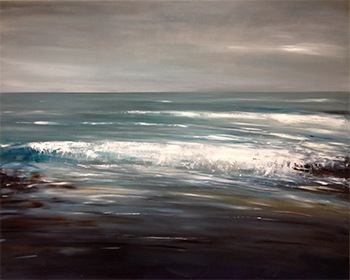
Artwork: Green Wave (2020). Medium: Oil on canvas.
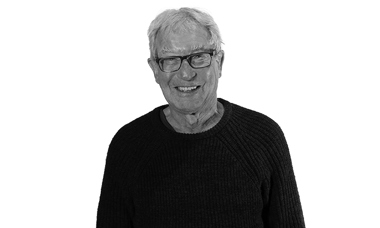
Alby Carter
Read moreAlby Carter

Tell us a bit about yourself.
I was born in Wellington and moved to Taranaki in 1982, where I have lived ever since. I worked as a joiner and a fisherman before seriously becoming an artist.
Who/what inspired you to become an artist?
As a teenager I played with watercolours. Then we moved into a different house and someone had left a set of oil paints there. That was the end of it; or the beginning of me. I've never looked back.
What would you like our audience to take away/ learn from looking at your artwork?
The painting represents a head, but with the brains on the outside rather than the inside, meaning, to me, that people are too influenced by all the rubbish that is out there, rather than being comfortable inside their head, in their own spiritual world.
What are your tools of choice?
Brushes, palette knife, sticks, fingers and fingernails, rags, chisels, glass of vodka and good music.
Social/Contact
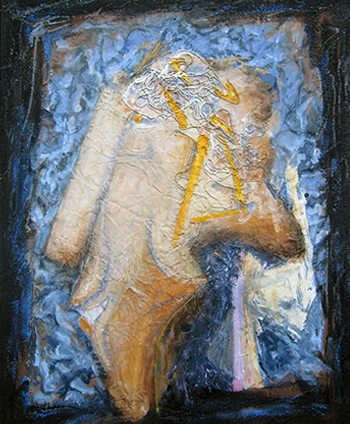
Artwork: Ahead of Today (2020). Medium: oil, sand, string and paper on board.
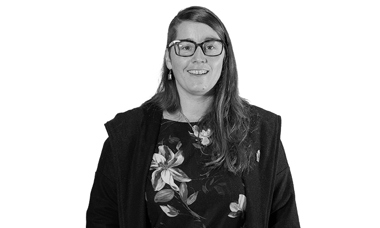
Alice Cowdrey
Read moreAlice Cowdrey

How is the theme of Tuku iho (raising awareness of traditions that are passed down through generations) represented in your artwork?
Migrant Cat carries not only the traditions, but the ancestral baggage of those who were born before her. Her clothing represents the roots of her Bohemian (Czechia) homeland and her backpack carries the image of a kārearea (the New Zealand falcon). Migrant Cat embodies a mythical past and her long journey through a dense spiritual landscape. She is somewhat lost and disjointed from the culture and traditions of her homeland and although she is unsure how her ancestral story serves future generations, she will look to nature and the spiritual realm to find the answers.
What are your thoughts about the state of art in Taranaki? And who, in your opinion, is creating the most innovative or ambitious works in our region currently?
I am fortunate to run Lumen Studios and Gallery in Tataraimaka with two amazing artists, Janeen Page (potter) and Teresa Goodin (collage artist). Being around other creative women, who use nature as their main inspiration to create, is a great motivator and takes away the isolation that often comes with making on your own. Taranaki has many incredible women artists who are doing inspiring work in a range of mediums.
Who/what inspired you to become an artist?
My mother is really creative and loves painting so creativity is just part of who I am. My main inspiration is the natural environment as well as history, folk art and animals.
Social/ Contact:
Folk Felt Instagram
Folk Felt Facebook
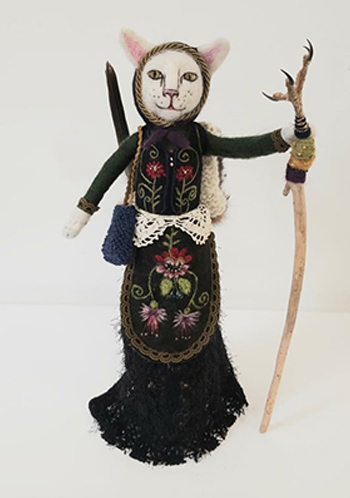
Artwork: Migrant Cat Heads Home (2020). Medium: Needle Felted (sheep's wool, possum fur, cotton, beads, falcon claw, feathers, wood, lace).
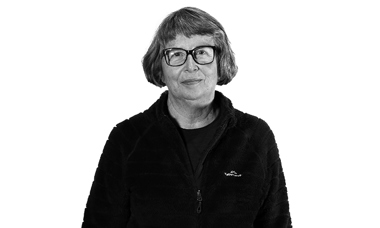
Amanda Hewlett
Read moreAmanda Hewlett

What’s the best piece of advice you would give to a young artist?
Follow your passion, learn from others while keeping your own identity in your work. Develop resilience and perserverance.
What are your thoughts about the state of art in Taranaki? And who, in your opinion, is creating the most innovative or ambitious works in our region currently?
Taranaki has a rich abundance of artists working across many disciplines. Alongside the Govett-Brewster Gallery/Len Lye Centre, showcasing contemporary art; there are community galleries, open artist's studios, marae, museum collections plus exhibitions like Puke Ariki’s Home Work. We have a very rich cultural environment.
Artists develop and produce a variety of work throughout their careers. Personally I find some of the works of Ngāhina Hohaia very thought provoking and visually compelling. Jordan Barnes, a painter, who is pushing himself in new directions, and Jennifer Laracy, a contemporary jeweller.
Social / Contact:
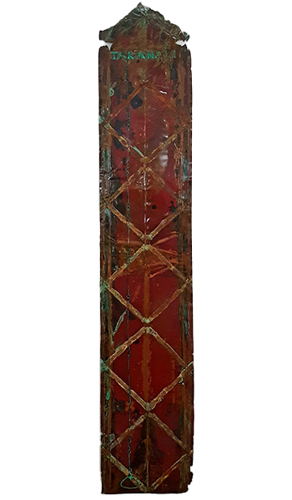
Artwork: Transforming the Known (2020). Medium: Recycled copper, verdigris and rust patinas, acrylic, iron sand.
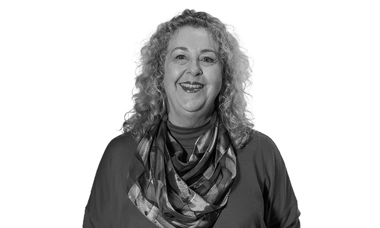
Andrea Connor
Read moreAndrea Connor

How is the theme of Tuku iho (raising awareness of traditions that are passed down through generations) represented in your artwork?
The tradition of looking after our land for the next generation has never held truer than now. We have a responsibility as the Kaitiaki of Aotearoa for our tuhanga.
Who inspired you to become an artist?
My mother was a potter and a painter. She encouraged us to express ourselves through art and was my primary inspiration. More recently, after meeting and sculpting alongside John McLean, his encouragement has taught me to give myself permission to do the things that drive me.
What would you like our audiences to take away/ learn from looking at your artwork?
My work has its roots in the natural environment, taking clues from organic shapes and patterns. There is something familiar about patterns made by nature that humans respond to at an almost visceral level. Happiness is that deeper satisfaction I find when creating or composing a work of art. I can put all of my emotions into a work, and then when someone views it, it again becomes an emotion - that of the viewer.
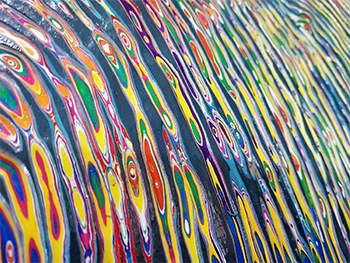
Artwork: Denier, Denier, Planet on Fire (2020). Medium: Acrylic on Canvas.
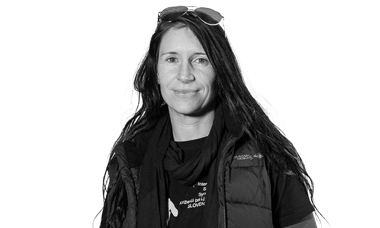
Anna Korver
Read moreAnna Korver

Tell us a bit about yourself.
I grew up in Nelson, completed my fine arts degree in sculpture at the University of Canterbury in 2003 and now have a studio based in Taranaki. I learned to carve wood with my dad when I was a small child and this is still my preferred process.
How is the theme of Tuku iho (raising awareness of traditions that are passed down through generations) represented in your artwork?
My work uses the symbol of the dress to describe various narratives on womanhood. The idea of the dress is inspired by the traditional female crafts that brought different generations of women together. It was more than a craft, it created a sacred space where their stories and family histories could be passed on.
What is the most challenging part about working with your medium?
I like the challenges in the mediums I choose. Metal specifically is both physically and mentally challenging which I really enjoy.
Social / Contact

Artwork: Red Dress (2020). Medium: Steel.

Anne Holliday
Read moreAnne Holliday

Tell us a bit about yourself.
I came to New Zealand in 2001 from South Africa. Back then I thought I was leaving violence behind but that was naïve, the world is full of violence all the time. This point is demonstrated in Scarecrow.
How is the theme Tuku iho (raising awareness of traditions that are passed down through generations) represented in your artwork?
Influenced by our societies past and present. We leave our work to future generations. I try to make paintings of a discomforting world.
What/who inspired you to become an artist?
A few good teachers. There are great support networks in Taranaki, Dale Copeland and Real TART gave me many opportunities.
Social/ Contact
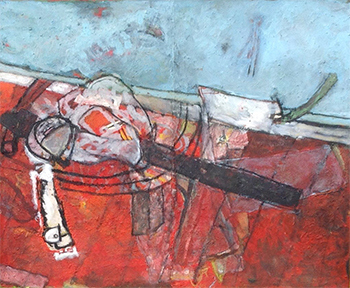
Artwork: Scarecrow (2020). Medium: Mixed media.
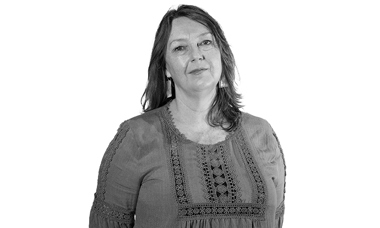
Antonia O'Mahony
Read moreAntonia O'Mahony

Tell us a bit about yourself.
I was born in New Plymouth, grew up on Ngāmotu Rd and attended Spotswood College. My father's family have been in the Moturoa area for many generations and were well known as musicians and entertainers. They had performing ponies at Ngāmotu beach, dance bands in halls around the mountain and were professional ventriloquists. This meant I was often around many colourful characters when I was young, plenty of subject matter for my painting and drawing! I left to travel at 20 and spent many years doing very odd jobs in very odd places around the world before settling in Ireland and having a family. Here I stayed still, long enough to start formal art study and a career as an artist before returning eight years ago.
Who/what inspired you to become an artist?
The person who inspired me to always look at art carefully and sparked my curiosity about the artist’s role in shaping our times was Mrs Van Passen, my art history teacher in high school. I'm always being excited by other artists, right now I've just discovered the Indian painter Bhupen Khakar.
What is the most challenging part about working with your medium?
Helping the audience know the difference between fine art printmaking and digitally printed copies and the love and craft that goes into the former.
Social/Contact
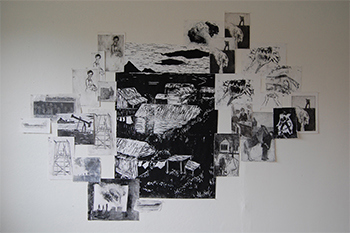
Artwork: Tell It Again (2019). Medium: Etching, woodcut, plate lithography. Monotype.
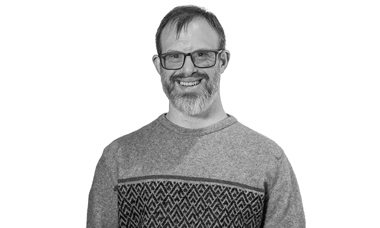
Andrew Doehring
Read moreAndrew Doehring

Tell us a bit about yourself.
Andrew is known for his joyful depiction of his subject matter, which is based on careful observation of the world around him. Andrew’s intuitive use of colour also delights.
He mainly works with engraving, etching, aquatint and monotype print making processes that preserve the freshness and skill of his drawing technique and use of colour that is so characteristic of his work.
Who/what inspired you to become an artist?
Andrew comes from a family of artists. He started painting with his grandfather, George Boys, who was an established abstract expressionist in South Africa.
What are your tools of choice?
Starting with a carefully observed drawing which can be transferred to an aluminium plate by etching or engraving. Applying and rubbing the ink on the plate and then the magic moment when the plate and paper are passed through the press and the blanket is lifted to reveal the artwork!
Contact
You can contact Andrew by email.

Artwork: Beehive (2019). Medium: Ink on paper.
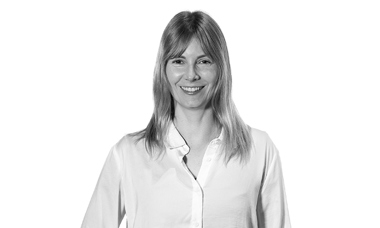
Belinda Lubkoll
Read moreBelinda Lubkoll

Tell us a bit about yourself.
Originally from Berlin, Germany I have been living in Taranaki for the past 10 years. My interest in creating jewellery has been influenced by working together with Rob Wright, jeweller at Ringcraft Moana in Ōākura.
How is the theme of Tuku iho (raising awareness of traditions that are passed down through generations) represented in your artwork?
My piece for Home Work is called Storyteller. It is about bedtime stories, told at night passed down from generation to generation. I enjoy the process of shaping metals and setting gemstones to create something beautiful.
What are your thoughts about the state of art in Taranaki?
A buzzing, thriving hub for artists.
Social/ Contact
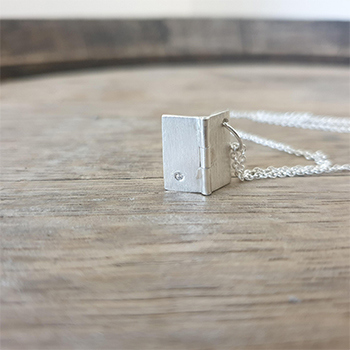
Artwork: Storyteller (2020). Medium: Sterling silver and diamond.

Brian Gnyp
Read moreBrian Gnyp

Tell us a bit about yourself.
I started urban sketching when I lived near Vancouver. It's basically drawing and painting on location, the regular things around where you live.
How is the theme of Tuku iho (raising awareness of traditions that are passed down through generations) represented in your artwork?
I was invited to a complete dispersal sale of a prominent Jersey breeding family in Kaponga. It was a large award-winning stud built up for almost 70 years. The three Revell siblings who took over their parents’ business were all over 70 years old (in 2018) and had no kids themselves to pass it on to. As I sketched, I wondered what would happen to my own life’s work, since I also don’t have kids.
What’s the best piece of advice you would give to a young aspiring artist?
To get as good as you feel you want to be, you will need to make a frustrating amount of horrible art first. You won't believe how much... but it gets better. I only rip out about 20% of pages from my sketchbooks these days.
Social/ Contact
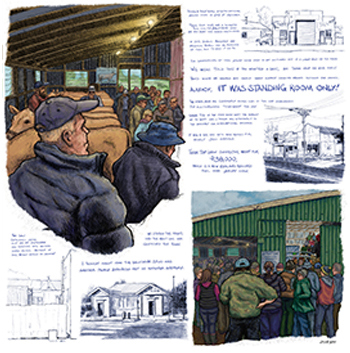
Artwork: That Weekend in Kaponga (2020). Medium: Digitally coloured ballpoint pen.

Caz Novak
Read moreCaz Novak

Tell us a bit about yourself.
Born in Wellington, I graduated from Wellington Teachers College with an art major and moved to Taranaki to begin my teaching career. The opportunity to return to painting presented itself when I left teaching to become the primary caregiver to my two daughters. Working as an artist for the last 22 years, I consider it a privilege to paint and explore colour for a living.
What does your art aim to communicate with your audience?
In Home Work 2020, my piece Gondwana brings a message of hope and unity in response to the challenges of global climate change. Set against the charred and blackened backdrop of the Australian bush fires, plants from the same botanical family (yet native to different countries) regenerate, flower and join together. This imagery represents the outpouring of international firefighting aid extended to Australia, and also the ongoing need for global unity to combat the effects of a changing climate. Like the ancient Proteaceae family, which has adapted to survive extreme climatic events, we will need to learn from our past, and embrace new ways of thinking and living to successfully face our future.
What are your thoughts about the state of art in Taranaki?
Taranaki has an incredibly vibrant art community that includes many established career artists who are continuing to produce exciting work, along with a growing number of talented young emerging artists.
Social/ Contact
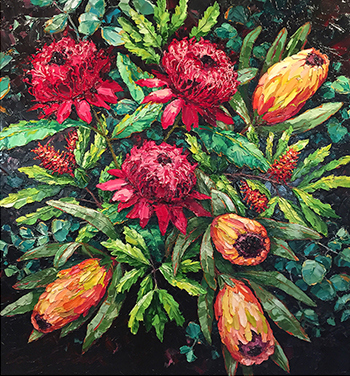
Artwork: Gondwana (2020). Medium: Acrylic on canvas.
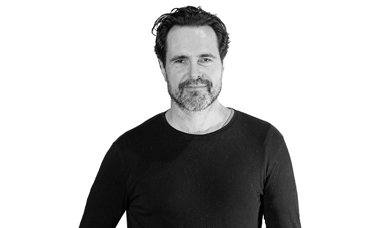
Chauncey Flay
Read moreChauncey Flay

Tell us a bit about yourself.
I grew up in New Plymouth but left to travel overseas after finishing high school (Spotswood College) in 1992. I returned to Taranaki in 2016 with my family after living in the Cook Islands for 6 years. We settled near Ōpunake. I am married to Tabatha Forbes, who is also an artist and features in Home Work: Taranaki Art 2020.
How is the theme of Tuku iho (raising awareness of traditions that are passed down through generations) represented in your artwork?
In the Cook Islands, coral was traditionally used as a construction material, with the coral melted down in fire pits and mixed with sea water to create a render/mortar, as well as the large corals themselves being used like building blocks.
This limestone render can be seen on a lot of the old buildings around Rarotonga such as the main churches and some of the very old houses. The knowledge of how to do this was passed from generation to generation but is now generally forgotten as modern construction techniques have replaced them.
Using coral as a material in my sculptures was a way to revisit this tradition and open up conversations with people in Rarotonga about this traditional use of coral. It also opens up conversations about environmental issues with the fragility of coral in the ecosystem.
What is the most challenging part about working with your medium?
Coral is a protected species, so any transportation of coral to New Zealand needs a permit first. This limits the number of pieces I can bring into the country to ONE piece per trip!
Social/ Contact
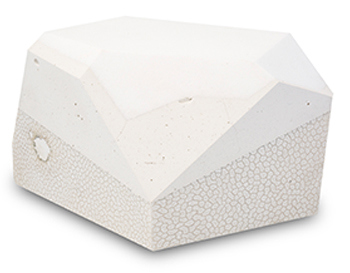
Artwork: Coralscape (The Sea Washes Over Us) (2019). Medium: Coral, limestone cement, polystyrene, polyfiller.
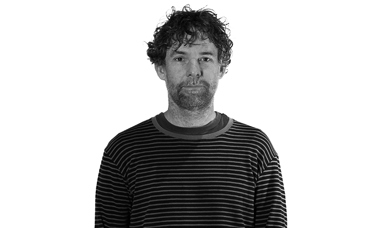
Ché Rogers
Read moreChé Rogers

Tell us a bit about yourself.
I spent my early childhood living around New Zealand and Australia, my parents finally settled in Christchurch when I was 12. This is where, in the 90’s, I studied art and design, and got involved in the independent music scene. I moved to Raglan in 2000 where I co-founded the Jet Collective Gallery and started painting circles. I arrived in Taranaki late 2003 drawn by cheap real estate and good surf. Soon after I was asked to do a pitch for WOMAD’s 2004 design which lead to being TAFT’s graphic designer - until I left in 2018 to pursue art full-time.
What are your thoughts about the state of art in Taranaki?
I think the Taranaki art scene is relatively healthy per capita. Local artists Rohan Wealleans, Shannon Novak, Reuben Paterson, and Fiona Clack are world class. I also find Volker Hawighorst's work pretty ambitious.
Who inspired you to become an artist?
It was one of the only things I was good at, at school. Album covers, pop and op art inspired me to want to be involved in creating. Both my mother and grandmother were artists so they encouraged and allowed me to pursue a career in this direction.
What’s the best piece of advice you would give to a young aspiring artist?
Keep doing it, keep developing, exploring. Find your uniqueness.
Surround yourself in art - read, listen, study, visit galleries, and watch art documentaries... be obsessed!
Live frugally.
Have something to say.
Social/ Contact

Artwork: Generation Gap (2020). Medium: Acrylic and spray paint on aluminium.
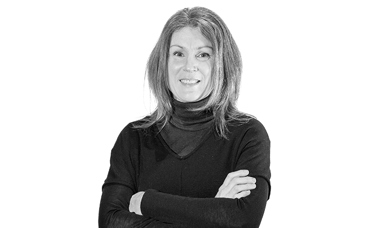
Claire Jensen
Read moreClaire Jensen

Tell us a bit about yourself.
I’m from New Zealand but grew up in Australia where I studied art and education. I have lived in Ōpunake for 15 years and have spent that time rearing children, working in schools and now as a self-employed artist. I prefer living in Aotearoa, you could say my iwi is Kiwi.
How is the theme of Tuku iho (raising awareness of traditions that are passed down through generations) represented in your artwork?
My sculpture Reverence represents habits that we may not recognise as traditions. In our modern society the ways of consumerism have been engrained for generations and now we do not know how to live any other way. My piece is intended to challenge notions of what a tradition is and highlight our dependence on plastic.
Social/ Contact
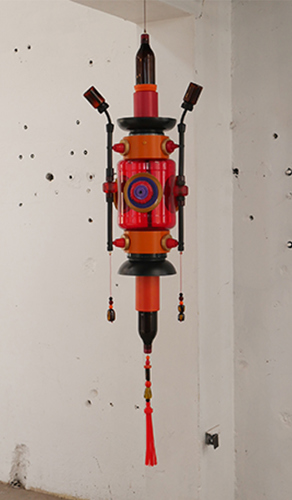
Artwork: Reverence (2019). Medium: plastic, steel.

Dside
Read moreDside

Artwork: Drawn by Dside, Coloured by You (2020). Interactive artwork, created partly by artist and finished by the public.
London has Banksy, New Plymouth has Dside!
Visit Home Work: Taranaki Art 2020 during the school holidays and help Dside colour in his artwork!
Social/Contact
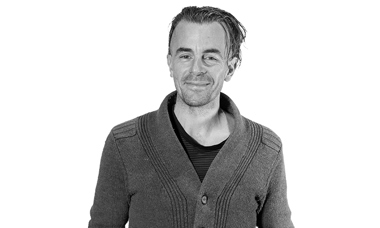
David Le Fleming
Read moreDavid Le Fleming

Who/what inspired you to become an artist?
I have had many influential people in my life, but it all started with my secondary school art teacher, Sue Artner. Sue moved to NZ from Los Angeles in the 1970s and was one of the few people in NZ to have a Master’s in Art History. She carved out a role for herself as an art teacher, and connected me to a world I never knew to be possible.
What is the most challenging part about working with your medium?
I work entirely with oil based paints such as enamels and traditional oil paints, and they all behave differently. Getting oils to adhere is easy but controlling the sheen and ratios of mediums is an ongoing learning curve. The temperature and humidity here in Taranaki is generally pretty good for drying paint, but the seasonal night to day variables mean there are small windows of time to be mindful of.
What are your thoughts about the state of art in Taranaki?
Here, artists of all levels of skill and experience seem to be able to give time to their work and have it seen by others. People are making the work they most want to make, even if that's not what's on trend. Being far from famous art schools and renowned artistic centres is a gift, and allows the scene to develop its own sense of identity.
Social/Contact
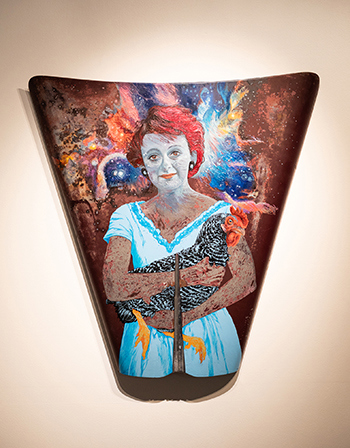
Artwork: Marvellous Chicken (2020). Medium: Oil on vintage car bonnet.
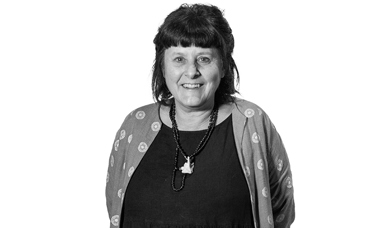
Deborah French
Read moreDeborah French

Tell us a bit about yourself.
I am a multi-media artist from New Plymouth. I mainly work with clay and printmaking at present. In the past paint was my preferred medium. The use of found materials intrigues me and this bag is a recent foray into playing with found materials again. Currently I am near completing my Master of Arts in Arts Therapy (Clinical). My dissertation is on clay as a material that can help work with trauma in therapy (drawing on the sculptural and transformative qualities of clay through firing).
What does your piece in Home Work 2020 aim to communicate? Is there a key message?
Notice the ordinary, the small, the discarded. It has beauty and something to offer.
Value those little rituals of life that create a sense of community and connection. The celebrations, funerals, birthdays, weddings, Friday drinks … ohhhhh the stories those tops could tell if they had a voice!
Who/What inspired you to be an artist?
I don’t have any memory of being ‘inspired’ to be an artist. Creating has always been a part of my self-expression and my way of responding to the world. I have carried visual journals with me since I was eight or nine. However my creativity extends to all aspects of my daily life not just in the studio. For example even cleaning the house becomes a creative experience with arranging and rearranging items for visual pleasure as I clean. My family through the generations were creative and resilient people. I see that my ‘artist self’ is an extension of the generations that went before. It is just who I am.
Social/ Contact

Artwork: 1, 2, 3 Count With Me (2020). Medium: Chicken wire, my mother's pillow slip and bottle tops.
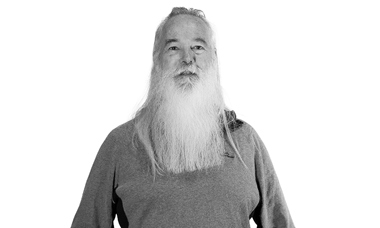
Derek Hughes
Read moreDerek Hughes

Tell us a bit about yourself.
Taranaki born and bred. Engineering trained but obsessed with photography since quite young. Have progressed through taking snaps of tramping trips, landscapes & holidays to creating artistic images of tramping trips, landscapes & holidays to photography as a full-time career. I have been connected to nature by my farming beginnings, my love of tramping New Zealand's wilderness tracks and my parents’ garden centre. So my photography is nature-based, often garden and horticulture related.
How is the theme of Tuku iho (raising awareness of traditions that are passed down through generations) represented in your artwork?
The garden and the reflection of light show the momentary nature of our memories....these will change as our perspective changes. This work is a culmination of my skill as a photographer and a representation of the fleeting nature of our memories, with the material realism of artefacts passed down through the generations. The crystal bowl, framed by the bungalow window. Photography adds a visual aid to recalling traditional aspects of our lives.
What are your thoughts about the state of art in Taranaki?
Taranaki art is rich and diverse. The art community is huge and brings vibrancy to our lives.
Social/ Contact:
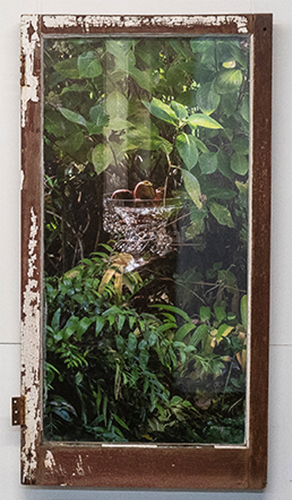
Artwork: The Transience of our Reflective Memories (2019). Medium: photograph, window frame.
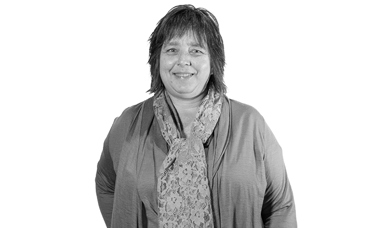
Dimphy de Vaan
Read moreDimphy de Vaan

Tell us a bit about yourself.
We emigrated from the Netherlands over 20 years ago and call Taranaki our home. Creativity and art have always been part of my life; experimenting, creating.
My art was only for me, recently I proudly show my mahi. I know for me it's important to have a creative outlet. I love giving workshops to let others experience the same, and let them know that we are all creative.
How is the theme of Tuku iho (raising awareness of traditions that are passed down through generations) represented in your artwork?
Exploring bone carving, an art passed on through many generations, I aimed to create a tool to be used daily, rather than an adornment. The memory of my parents' special designed spoons in their salt and sugar jars inspired me to design an ergonomic, easy to use spoon, with a soft look, and a hint of Taranaki represented with the feather.
What does your art aim to say to your audience?
Using my Saltspoon makes me smile every day! It is a blend of creativity, giving things a go, whanaungatanga and memories.
Social / Contact
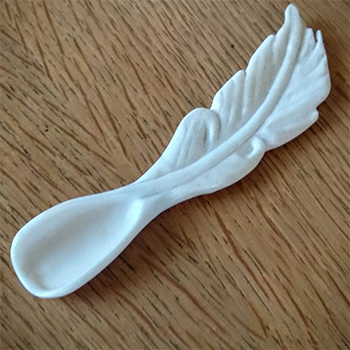
Artwork: Saltspoon (2019). Medium: Cowbone.
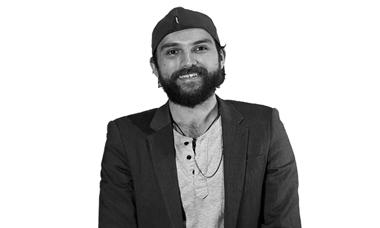
Dwayne Duthie
Read moreDwayne Duthie

Tell us a bit about yourself.
I was born and raised in Taranaki, and I live here with my partner Jessie and our daughter Ruby Jane. I have practiced art for a number of years. I have family affiliation to Taranaki iwi.
How is the theme of Tuku iho (raising awareness of traditions that are passed down through generations) represented in your artwork?
Handshake uses the symbolism of shaking hands as a way to communicate the ideals of welcoming, understanding, agreement and explores how these factors will help determine the decisions to be made by future generations. Handshake incorporates a traditional medium with modern.
What’s the best piece of advice you would give to a young aspiring artist?
While you’re young create works that make you happy and don’t be afraid to experiment with your art, there is plenty of time to establish your works.
What are your tools of choice?
Projectors, monitors, video and audio software, acrylic and oil paint. My recent commission features on the outside of Gover St Art Gallery, New Plymouth.
Social/Contact
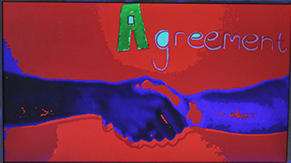
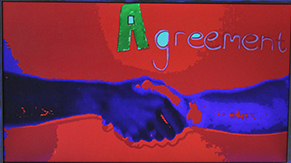
Artwork: Handshake (2020). Medium: Acrylic on TV monitor, digital video.
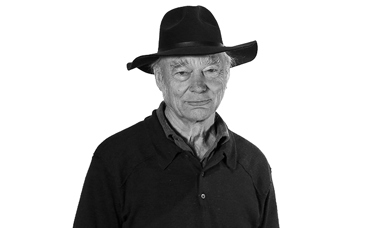
Graham Kirk
Read moreGraham Kirk

Tell us a bit about yourself.
I was born in Hawera in 1948. Around the age of nine I began making comic strips - collections of short stories with titles like Buttercup and Butch on Mars, and Olley and Lazy in the Time Hat. The rest of the time I was drawing ships.
In 1988 I had an exhibition of panels from a comic at the Govett-Brewster Gallery. These took the form of air brushed gouache on paper. (I had been experimenting with an air brush as a means of putting down flat, even colour for comic strips.) Seeing the individual panels done to a larger scale prompted me to make them larger still by switching to acrylic on board. About this time I was considering doing a series of paintings of Hawera, my old home town. I began taking photographs of the place (and the water-tower, inevitably) but realised that something else was needed. It turned out to be Superman - Superman and the Hawera Water Tower, followed shortly after by Batman and the Catholic Church. This began a series of "Superheroes in New Zealand" paintings which currently number around 90. I've never wanted to be a painter in the traditional sense, working from sketches or painting from life. I've always preferred the immediacy of the snapshot image, and there has always been something about the photographic 'truth' that appeals to me.
What advice would you give to a young aspiring artist?
Make a start. Don’t delay. Get out of the house with a sketch book or a camera or whatever. Create lots of images and then select the ones that you think are best. Keep on doing this and see what happens. If you can’t decide which is your best work, then art may not be for you.
Social/ Contact
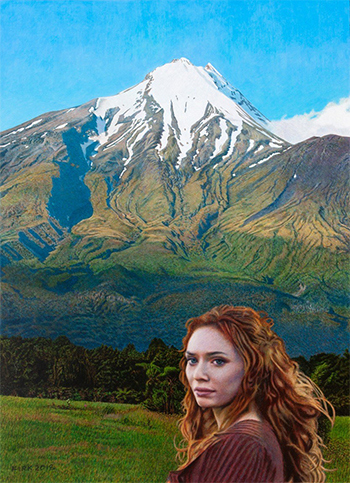
Artwork: Demelza and Mount Taranaki (2019). Medium: Acrylic on board.
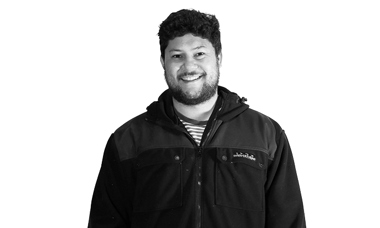
Haoro Hond
Read moreHaoro Hond

Tell us a bit about yourself.
My iwi affiliations are: Taranaki, Ngā Ruahinerangi, Te Āti Awa, Ngai Tāmanuhiri.
“He puawai au i runga I tikanga he rau rengarenga nō roto I te Raukura.
Ko taku raukura he manawanui ki te ao.”
“I flourish within Parihaka's principles, I find wellbeing in the symbol of the raukura, my raukura is my resilience in the world.”
I am a young emerging artist from Taranaki. I developed quality skills and knowledge at Toihoukura, in Gisborne, where I completed a three-year undergraduate Degree in Māori Visual Arts under the guidance of some of the most influential Māori artists our culture has to offer.
Who/what inspired you to become an artist?
I was fortunate enough to have the likes of Hemi Sundgren in my life growing up. He helped nurture me as a boy who liked to draw, to an artist that loves to create.
What’s the best piece of advice you would give to a young aspiring artist?
To always persevere through the trials and tribulations. Each piece of art you complete is a step closer to achieving your goals. Each piece of artwork you complete is a reflection of your personality, upbringing and potential. NEVER turn down any opportunity to use art as a platform to ultimate happiness within yourself and others. You may never know what opportunities may follow from taking a leap of faith.
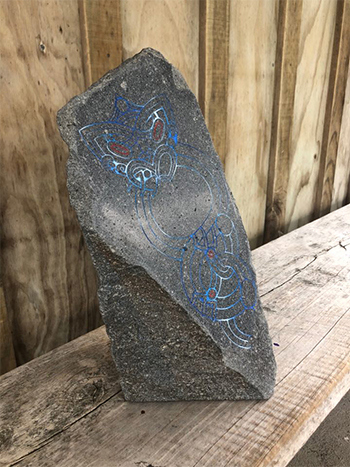
Artwork: Te Rere (2020). Medium: Stone, acrylic.
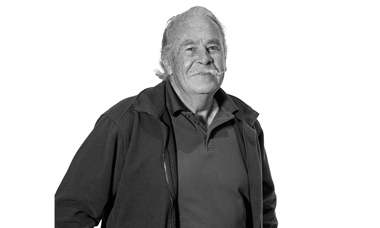
Howard Tuffery
Read moreHoward Tuffery

Tell us a bit about yourself.
I think of my work as a connection to my surroundings, in particular the Taranaki coast, where I live. Born in New Plymouth, I spent my childhood at Fitzroy Beach. Finished my schooling at New Plymouth Boys' High then Otago University. I began making and selling wooden furniture in 1974 and established a studio in rural Inglewood. In 1983 I was awarded the Arts/Crafts Council grant, which gave me the opportunity to study and work with cabinetmakers and sculptors in Australia, USA and UK.
I moved to the Urenui area in 1987 and re-established a studio. My first introduction to stone carving was Rangamarie Māori arts and my participation in the group carving of a wooden pole and a stone figure now positioned at Puke Ariki Landing. I joined Te Kupenga stone sculptors and attended my first symposium in 2002. I continue to work in wood and stone, using local materials to produce high quality, hand crafted objects.
What would you like our audience to learn from looking at your artwork?
To view the earth, Taranaki and our land, as living and moving with all things in nature. I’m interested in the forms, patterns and movement in our landscape. The geometric cones of Taranaki, organic shaped lahar hills, river stones, beaches and surf, our volcanic landscape is evidence that the land is fluid and changing. The polished and textured surfaces of my sculptures reflect the surfaces of our local landscape. We also have connections to and dependence on the land and there is a need to protect and manage our relationship with it.
Social/Contact:
I invite interested people to contact me by email or phone. I have a sculpture garden and gallery at my home, open by appointment.
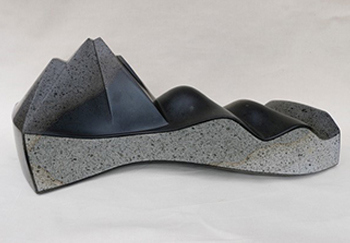
Artwork: Local Landscape (2019). Medium: Taranaki andesite (stone).
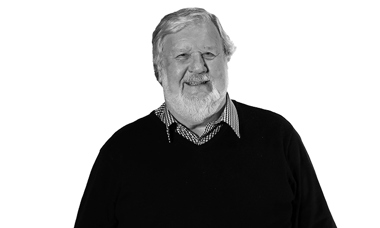
Ian Axtell
Read moreIan Axtell

Tell us a bit about yourself.
Born in Epsom, England in 1946, I immigrated to New Zealand in 1973 and officially became a Kiwi in 1978. In 1980 I became a solo parent of four children. In 1983 I started studying at Auckland University (BA. studying History and Education) intending to teach history. More importantly, I met my future wife there in 1984. In deference to the wellbeing of youth I became a potter, potting for nearly 20 years including four years teaching at Auckland Studio Potters. I married Marian in 1990, started art classes in 2002, and completed a Graduate Diploma in Fine Arts at Auckland University 2007. In 2011 we moved to Taranaki to continue painting through my ‘advancing’ years.
Who/what inspired you to become an artist?
I have always possessed an innate artistic drive but circumstances prevented any pursuit of this dream. The desire was suppressed for many reasons and many years. A childhood inspiration was Turner and more recently others such as Rothko and Richter. For me applying the passion to paint is an important example of ‘better late than never.’
Social/ Contact
Ian Axtell on Mobile Art's website
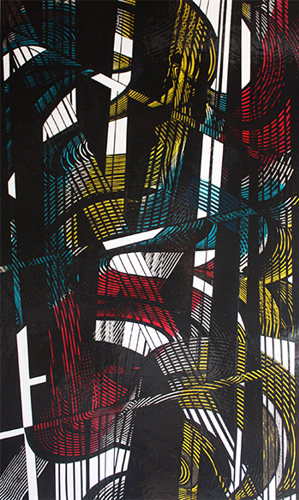
Artwork: Changing Times (2020). Medium: Acrylic on canvas.
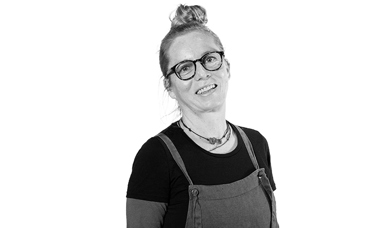
Isla Fabu
Read moreIsla Fabu

Tell us a bit about yourself.
I am an artist with a passion for transforming natural materials from my environment into multilayered pieces of art. Consequently my work is about the nature of inter-being, impermanence, and where we belong beyond human society. I was born on an Island in the Baltic Sea and raised in the GDR, a country which no longer exists. My background is Communication Design. I have lived in Berlin, Italy and Ireland before I moved to Aotearoa/NZ in 2012. Creating art has always helped me to enter magical realms. Only recently have I started exhibiting my work.
How is the theme of Tuku iho (raising awareness of traditions that are passed down through generations) represented in your artwork?
The theme is represented via the thread created from muka, merging passed down fibre traditions from different cultures. It refers to "iho" as umbilical cord — connecting earth and sky, different spheres, times, lifeforms and generations.
Who is creating the most innovative or ambitious works in our region currently?
I'd love to see more provoking artworks. I'm inspired by the work of Lee Rapira, Ngāhina Hohaia and Sally Hikaka.
Social/ Contact
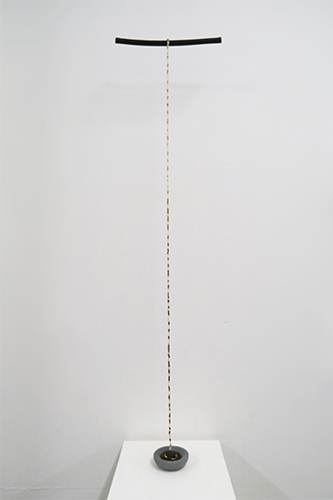
Artwork: The Gift We Receive, The Gift We Return (2019). Medium: Handspun muka, harakeke, andesite.
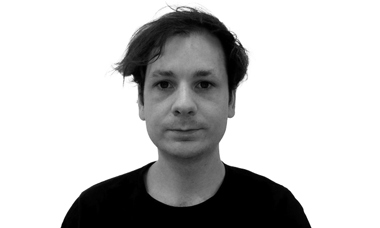
Jake Silby
Read moreJake Silby

Tell us a bit about yourself.
I use photography, found image and installation to consider the intersection of land, histories, and perception. I am the recent recipient of an Master of Fine Arts in Photography from the School of the Art Institute of Chicago (SAIC) and am currently based between Chicago and Taranaki. Due to Covid-19 I am now located in Chicago for longer!
Who/what inspired you to become an artist?
Growing up here and having immediate access to the Govett-Brewster Art Gallery was really influential to me, and helped me realize that visual art can be used to understand and articulate my relationship to my surroundings.
What is the most challenging part about working with your medium?
I work mainly with photography. In recent years this has become more difficult due to the ubiquity of photographic technology, and the sheer amount of images produced daily. Making work that is meaningful and enduring in this contemporary moment is a true challenge.
Social/Contact
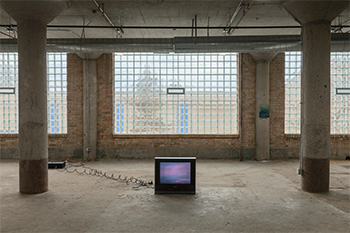
Artwork: Taranaki Mounga (14th February 2017, 20:04 - 20:59) / Taranaki Mounga (From October 2019 SSAM Data) (2019). Medium: Audio-digital film.
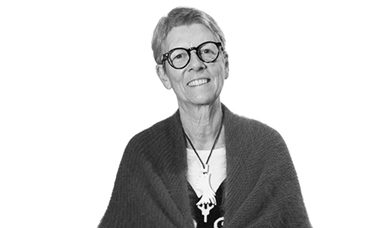
Jan Treliving-Brown
Read moreJan Treliving-Brown

Tell us a bit about yourself.
I was born in Fitzroy and educated at New Plymouth Girls’ High School then Auckland University. I have a Master’s degree in adult literacy and numeracy. Having taught at Ōākura Primary in the 1990s, I moved to the tertiary sector and set up a literacy and numeracy unit at WITT. Now I’ve retired with my husband Mike Brown, bone carver, to our stone cottage at Tongaporutu or our riverside bach – we love taking our beloved foxie Bella for beach walks to The Three Sisters. Mike and I have three children and seven grandchildren in both Auckland and the USA.
How is the theme of Tuku iho (raising awareness of traditions that are passed down through generations) represented in your artwork?
My grandmother Ivy Myrtle Joll carried out the Christmas rolling of the pastry, her rings placed carefully on the windowsill. Sprinkling flour, rolling, cutting, filling, baking – traditions becoming scarce. May this installation inspire you to pass on your unique areas of expertise to your children and grandchildren. If you don’t pass them on, who will? Tuku iho, tuku iho.
What are your thoughts about the state of art in Taranaki?
Taranaki, place of my birth – and thankfully there is a vibrant arts community here showcased by the amazing Taranaki Arts Trail. It is gratifying to see pop-up outlets where artists from our region can display their talent alongside other artists, share inspiration and most importantly arrive at a price for their work. If I could wave a magic wand and own any piece by a local artist, it would be one of John McLean’s paintings from his series “The farmer’s wife and the farmer”, or perhaps one of Howard Tuffery’s exquisite stone bowls. In my view, the three most innovative artists, hands down, are arts leaders in the community: 1) Mike Brown, bone carver and entrepreneur, organiser of New Zealand’s biggest annual bone carving event – the Easter bone carving symposium at Mokau. 2) Sam Kelly, co-owner of ‘The Jewel and the Jeweller’ and initiator of jewellery workshops, non-stop hard worker dedicated to passing on her skills. 3) Dale Copeland, assemblage artist, mentor, encourager and all-round joy-germ. These three people do not keep their art to themselves. They have incredible mana in their fields of creativity and devote themselves to providing opportunities for people to learn new skills.
Social/ Contact
Jan Treliving-Brown on Instagram
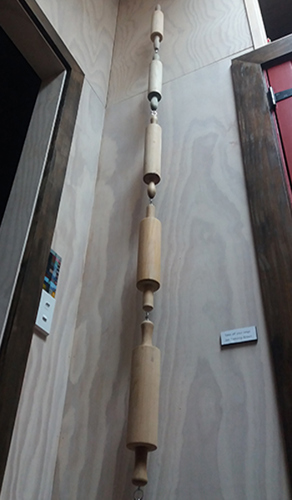
Artwork: Take Off Your Rings (2019). Medium: Installation, mixed media.
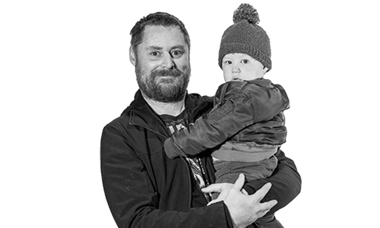
JD Reid
Read moreJD Reid

Tell us a bit about yourself.
As a child I apparently claimed I wanted to be an artist and live in the bush, years went by and like many people I didn’t see art as a realistically feasible career choice so continued to draw and paint just for my own enjoyment. Later I started painting in the evenings and was surprised when they started to sell fairly consistently. I am now a full-time artist, musician, father and proud owner of JD Reid Gallery.
How is the theme of Tuku iho (raising awareness of traditions that are passed down through generations) represented in your artwork?
If anything in this world is passed down through the ages it's the planet we live on as well as the resulting climate conditions we may leave behind. A familiar subject in an unfamiliar setting, despite the fact this painting could depict a negative set of circumstances I chose to paint it with a serene and inviting mood to encourage questions on whether this is may be a manmade catastrophe or perhaps just the natural order of things.
Social/ Contact:
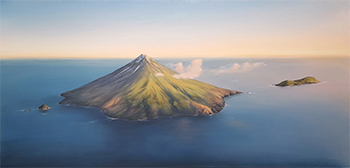
Artwork: Taranaki Atoll (2020). Medium: Acrylic on canvas.
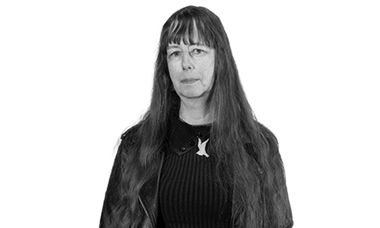
Joanne Wilkes
Read moreJoanne Wilkes

Tell us a bit about yourself.
I was born in Papakura, raised in Cambridge, then moved to Taranaki 35 years ago and identify this province as home. I am self-taught finding my own creative path through the media of; gouache, mixed media and collage through to impasto oils applying the paint with a knife. Realism is the common vein throughout my work. Producing artworks for solo and group shows over the years I have exhibited with other Taranaki artists nationally and internationally including in Australia, New York and France. I have placed in national art awards and my artworks are in private collections around the world.
How is the theme of Tuku iho (raising awareness of traditions that are passed down through generations) represented in your artwork?
An artwork is a narrative of an experience observed, transcending the multitude of styles which communicates something about the time it was produced. My depiction of the Awakino Tunnel represents our tradition of travel - building passages, traversing challenging terrain through the countryside to enable communities to commute and connect. Life and death on the road is a reality.
Who/what inspired you to become an artist?
I have always had a passion for art and a desire to be an artist, it is where my natural abilities lie. A curiosity, appreciation and observation of the beauty and human interaction in the world around us and a need to make sense of it all inspires my creative expression.
Social/ Contact
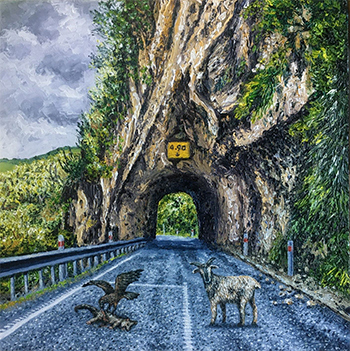
Artwork: The Awakino Tunnel (2020). Medium: Oil applied by knife on canvas.

John McLean
Read moreJohn McLean

Tell us a bit about yourself.
Originally from Tauranga, I moved to Taranaki as a young teacher. But gave that up when I opted to pursue art seriously and was fortunate to have a short period of mentoring from Michael Smither. The greater part of my painting career has been land based, at my home north of Urenui. This was accompanied by various part-time jobs when necessary. Having pursued this vocation for 45 years, I am pleased to report the beat goes on as strong as ever.
Who/what inspired you to become an artist?
An early teacher and great NZ artist, Ted Bullmore, was inspirational, as was Michael Smither who appeared at the right time to generously baptise me into the practice.
What would you like our audiences to take away/learn from looking at your artwork?
Be prepared to have fun with the image and don't ask for logical interpretations. Some pieces work because they are open ended and evoke thought rather than provide conclusions. Despite its representational content it is a painting as an object in the first instance and can be enjoyed for being what it is, as it is.
Social/Contact
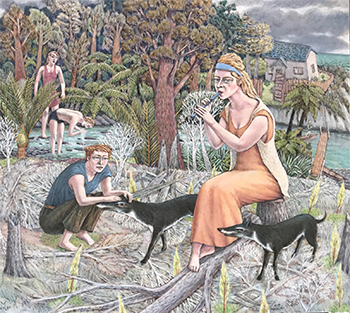
Artwork: Calling Primitive (2020). Medium: Oil on canvas.

Joni Murphy
Read moreJoni Murphy

Tell us a bit about yourself.
I was raised in Onaero and then Okau, wild beaches and bush clad surroundings were my playground, my mother's garden was my sanctuary. I have been deeply inspired by nature, the landscape and the experiences that make us who we are.
I graduated with a Diploma of Arts and Creativity (Honors) studying part time over many years while working, traveling and raising my children.
I settled back in Taranaki in 2011, working as a full time professional artist from my home studio in New Plymouth.
I am a painter, designer and arts educator.
Who/what inspired you to become an artist?
Art making and creativity is highly valued within our family. Painting watercolours with my grandmother strongly influenced my artistic direction.
The medium itself also inspires me. The water element of femininity, the unpredictable and intuitive nature of working with this medium gives each piece something of its own unique personality. There is a sense of connection to the history of female artists, as a medium traditionally used by women, it was considered a “ladies’ medium" during the Victorian era.
What would you like our audiences to take away/learn from looking at your artwork?
Inspiration is around us every day. The beauty of a tree, a flower and the wild weeds. I want to share my wonder and awe of the natural world, to awaken that awareness in the viewer, and the need to care for our earth.
As the title of the painting suggests, Matres Hortus - Our Mothers Garden, there is also a narrative of motherhood/womanhood/Mother Earth and tending to gardens weaved through these paintings.
Plants tell the story of our earth, the rhythms and cycles, reminding us of our own rhythmic nature. They give us a moment in our busy lives to experience, acknowledge and enjoy the beauty which surrounds us. Learning the interconnections, how one plant loss can affect a whole ecosystem, is a simple yet powerful tool in creating change.
Social/ Contact
Visit Joni's studio during the Taranaki Arts Trail (30 October to 1 November)
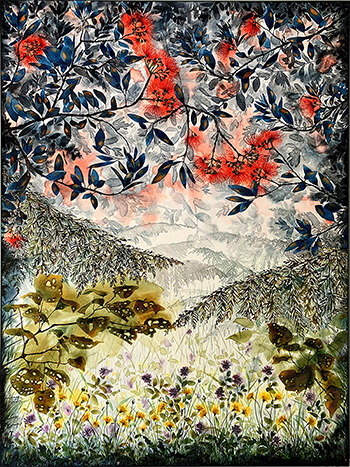
Artwork: Matres Hortus Series #40 (2019). Medium: Watercolour and Ink on canvas.
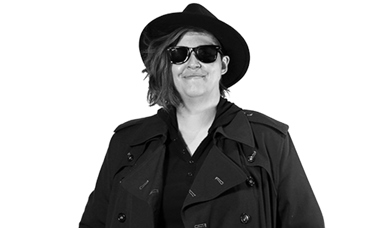
Kayla Upton
Read moreKayla Upton

How is the theme Tuku iho represented in your artwork?
The Tarot isn't just a fortune telling device you see at travellers’ fairs. It's an encrypted text on alchemy, meditation, mythology, and philosophy. Occult science and philosophy has been pervasive throughout my life. I grew up in an environment very conducive to exploring occult concepts. It was completely normal to meditate and have my Tarot read. Those themes have combined and come out through the language I feel most comfortable speaking in: three-dimensional forms, textures and anatomy.
Who/what inspired you to become an artist?
Before I could speak, I would draw and mash together shapes in play-doh. Art seemed to be my native language. My mother saw this and used what little money she had to buy my art supplies. Form and shape was fundamental to my understanding of the world around me. Even when approaching subjects within two dimensional media like painting or drawing, I would apply a three dimensional thinking. My mother gave me the space to develop my own understanding through the medium of art, which provided a formative experience that I’m incredibly grateful for.
What is the most challenging part about working with your medium?
The arts shadow-working process. Really having to look at the ugly parts within myself. Sure the hermetic research is gruelling, the wax working keeps adding burn scars to my collection, and the metal grinding is horrendously noisy and time-consuming. But I love all that stuff. It is the self-questioning that can’t be made comfortable no matter what position you're in.
Oh and I'd like to add a second challenging aspect to the list: Bronze sculpting is expensive. No way of getting around that one.
Social/ Contact
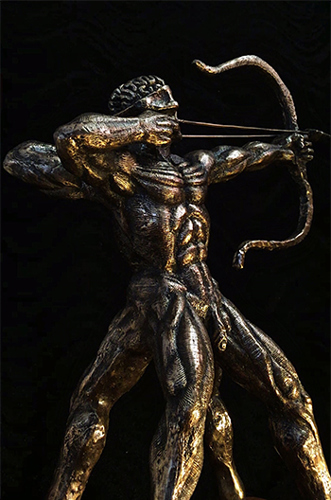
Artwork: Temperance (2019). Medium: Bronze on reclaimed rimu.
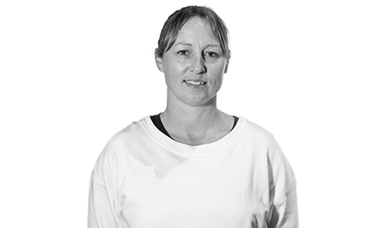
Laura Buchanan
Read moreLaura Buchanan

Tell us a bit about yourself.
My Tuku Iho is one; earth, soil and land.
Born in Tāmaki-Makau-Rau, Auckland I have connections to Maungakiekie One Tree Hill and Maungawhau Mount Eden.
As a child we spent our holidays at Waipū Beach, where Taranga, Hen Island and Marotiri, Chicken Islands were the backdrop to our childhood.
My husband and I are gypsies at heart, having lived in Auckland, Muriwai, Gisborne, Tairua, Hamilton, Raglan, Whanganui, Waiinu and now Taranaki.
Wherever we have lived I feel an attachment to the mounga (mountain). I even wear it on my arm to remind me of the birth of my daughter, Daisy.
What’s the best piece of advice you would give to a young aspiring artist?
Just keep at it. It's not finished until it's finished.
Art comes from you and your uniqueness.
You don't need to explain your work.
Some people just aren't going to get it.
Shrug off negative comments.
How is the theme of Tuku iho (raising awareness of traditions that are passed down through generations) represented in your artwork?
Expressing in an artistic form, myths and legends are passed down through generations.
My piece created in uku clay, represents mounga Taranaki. The Battle of the Mountains can be told using this piece.
The mountain in its symmetry resembles a hue puruhau, a gourd once used as a wind instrument. When blown over the top, with the finger over the vent, it makes a long hollow sound. These instruments were used for bird calling, to communicate with gods, to signal an arrival to a marae or the birth of a child.
My father cups his hands and blows into them, creating a similar hollow call.
It reminds me of the loud whistle my mother used to round up my siblings and me, a whistle I now use to call out to my four tamariki.
Creating studio pottery is a passion I share with my mother and now I am passing down to my children.
Social/ Contact
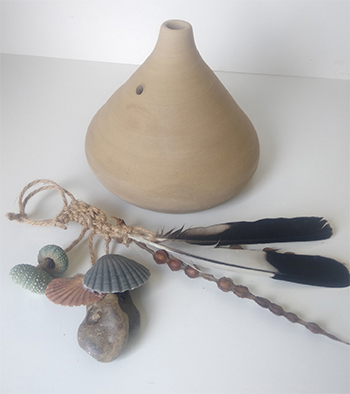
Artwork: My Mounga (2020). Medium: uku clay.

Laurel Davis
Read moreLaurel Davis

Tell us a bit about yourself.
New Plymouth is my home. I share my small piece of paradise with family plus dog, cats, and a lot of goldfish.
What would you like our audiences to take away/learn from looking at your artwork?
I would hope it makes people smile. A light hearted look at genetic mutation, man-made or naturally occurring.
What are your tools of choice?
My trusty soldering iron.
What’s the best piece of advice you would give to a young aspiring artist?
Don't be afraid to experiment and don't give up.
Social/ Contact
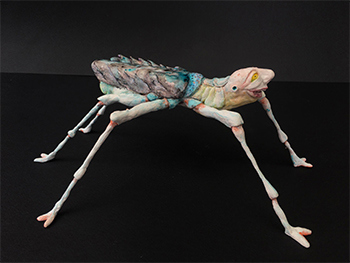
Artwork: Grinner (2020). Medium: polymer plaster.
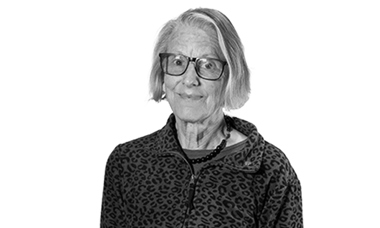
Maree Horner
Read moreMaree Horner

Tell us a bit about yourself.
A childhood on a Waikato farm followed by teenage years growing up in Auckland’s eastern suburbs led to my attending the University of Auckland in the early seventies. My natural skill set and interests, saw me complete a Master of Fine Arts degree in sculpture at Elam School of Fine Arts. After a period of overseas travel in the late 1970s my growing family settled in Taranaki. For the last forty years South Taranaki has been my home, where I have juggled family life and full-time work as an art teacher whilst maintaining an art practice.
How is the theme of Tuku iho (raising awareness of traditions that are passed down through generations) represented in your artwork?
The ubiquitous cardboard box is a found item that I often utilise with other basic objects, plus I add figurative elements, to evoke the female and/or the male and explore the relationship between gender. In global reverberations, traditions of packaging and wrapping are employed to examine concepts of containment, unity, inclusion, embracing, holding, and probe human fundamentals.
Social / Contact

Artwork: Global Reverberations (2019). Medium: Photograph.
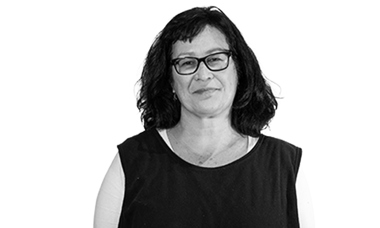
Maria Brockhill
Read moreMaria Brockhill

Tell us a bit about yourself.
Te Āti Awa, Ngāti Ruanui, Ngāti Maniapoto.
I am from Waitara, but now live in Bell Block, where I work full-time as a ceramic artist.
How is the theme of Tuku iho (raising awareness of traditions that are passed down through generations) represented in your artwork?
The dark green glaze cloaks the vessel and invites a close up look at the rich markings. Some are stylised Māori motifs, some are reminiscent of the landscape. This vessel is all about whenua.
What are your thoughts about the state of art in Taranaki?
Taranaki art is thriving with so many galleries and outlets showing art. I won’t single out one person as I think there are many doing interesting and captivating works.
What is the most challenging part about working with your medium?
Unpredictability. I’m never absolutely certain what the outcome will be, there are a lot of factors that contribute to a successful pot.
Social/ Contact
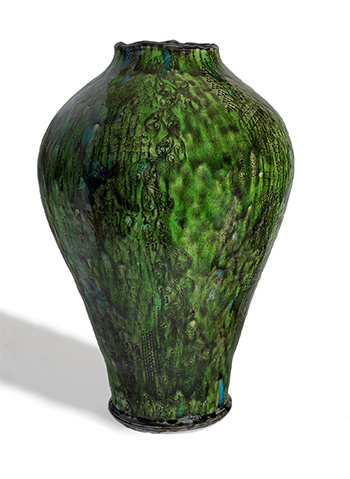
Artwork: Spirit of the Land (2019). Medium: Porcelain Clay and Glazes.
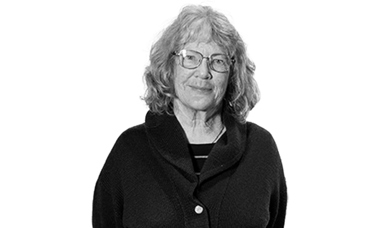
Marianne Muggeridge
Read moreMarianne Muggeridge

Tell us a bit about yourself.
I am from Taranaki, Alton, Opunake, New Plymouth, now Oeo Road, Awatuna. Born 1952. I am third generation New Zealander with English and Irish ancestry.
How is the theme of Tuku iho represented in your artwork?
Before photographic paper was invented the only visual record of a person was through portraiture. Since the invention of the lens and camera obscura in the 15th century portraiture has been fundamentally photographic.
Quoting from David Hockney’s Secret Knowledge (2001) "...from the early 15th century many Western artists used optics by which I mean lenses and mirrors to create living projections. Some artists used these projections directly to produce drawings and paintings and before long this new way of depicting the world - this new way of seeing - had become widespread." It is generally accepted that Vermeer and Canaletto used camera obscura extensively but Hockney argues the practice was far more widespread. It is very apparent that most modern portraiture, in fact most realist painting, is done from photographs. But not mine!
Who inspired you to become an artist?
I have no memory of being inspired. My parents Ross and June Muggeridge held artists in the highest regard which probably influenced me. In London, 1976, I "was inspired" to become a drummer, bought a drumkit and joined a band. Lasted several months, was no good at it and was very happy to return to drawing and painting.
What’s the best piece of advice you would give to an aspiring young artist?
Work from life.
Social/ Contact
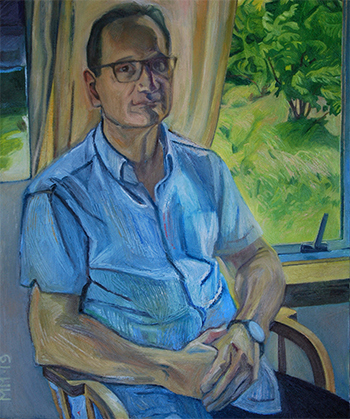
Artwork: Oranga Niho mo te Tangata Chris Taylor (2020). Medium: oil on canvas.
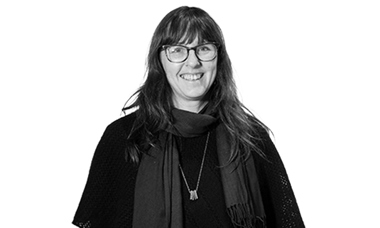
MB Stoneman
Read moreMB Stoneman

Tell us a bit about yourself.
I am a visual artist, writer and community arts worker. Born in New Plymouth, I travelled around Aotearoa and overseas for many years before settling in Pātea in 2004. I am co-owner of The Bank Room, a coffee shop/art gallery in the old BNZ Bank in Pātea where I reside with my husband and menagerie of animals. My current art practice explores intaglio, relief and letterpress printmaking processes. I aim to create a form of drawn, linear communication that links our natural world to the human condition. I deeply enjoy the historical origins and alchemy of printmaking, the physicality of creating the matrix and the magic of pulling a print.
How is the theme of Tuku iho (raising awareness of traditions that are passed down through generations) represented in your artwork?
The erratic and predictable patterns of order and of chaos are capable of sparking visual analogies, articulating innate scientific cosmologies and theories. Universal energy systems, quantum physics, parallel dimensions, energy transfers and pattern recognition all connect us, via conscious and unconscious visions or ancestral mindscapes. Works from my 'Chaos Series' personify these themes through patterns we observe every day, seen through the lens of ancient rhythms led by the static of nature.
Who/what inspired you to become an artist?
The inherent need to make stuff, to get lost in the action of making.
To tell stories; to describe seemingly indescribable things.
People I've met, stating claims like 'Art is Bravery' and actually pulling it off, brilliantly.
And my Mum and Dad, who always demonstrated and nurtured all of these things.
Social/ Contact
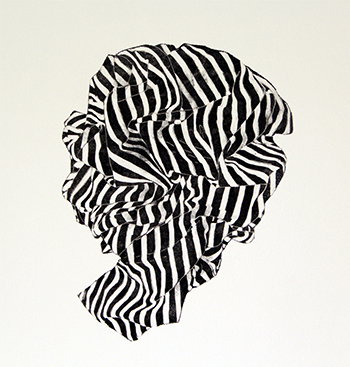
Artwork: Portrait of Us (2020). Medium: Monoprint on paper.
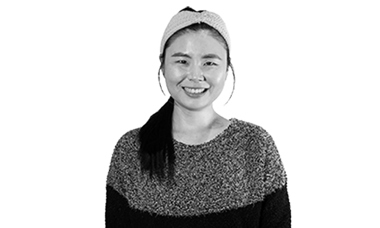
MiSun Kim
Read moreMiSun Kim

Tell us a bit about yourself.
I am from South Korea. My major was Chinese Culture in college, but I found my calling in art seven years ago when I met my mentor Chang-Woo Seok who inspired me a great deal in Calligraphy as well as in Korean art. I came to Taranaki in 2017, since then I am proud to be a part of this beautiful art group. For the last two years I have been part of the Taranaki Art Trail and I was awarded the Taranaki National Art Award in 2018. I thank the Lord for everything he has done for me.
How is the theme of Tuku iho (raising awareness of traditions that are passed down through generations) represented in your artwork?
My main subjects are pine cones and pine needles. They represent all sorts of things, constellations in the universe, mountains, whales, even winds. When I struggled the most in life about my future I have met pine cones in the mountainside. As I picked one up and looked at it closely I realised that it looks like a beautiful flower and also a shining star. So I started drawing them. This piece is called Birth. As the birth of a new star. For so many months I had to carry this piece in my mind. So when I finished the piece I felt that I gave birth to this piece. I hope this work encourages and cures others as it already did for me.
Who/what inspired you to become an artist?
Chang-Woo Seok is the one who inspired me to become an artist. When I saw him for the first time seven years ago, I was shocked that a person can be so passionate about his work despite his condition. He was electrocuted when he was 30 years old and lost both of his arms and was almost killed. Now he’s well known to the world for using his prosthetic arms to perform. Watch him performing an installation at 2014 Sochi Winter Olympic Closing Ceremony.
Social/ Contact
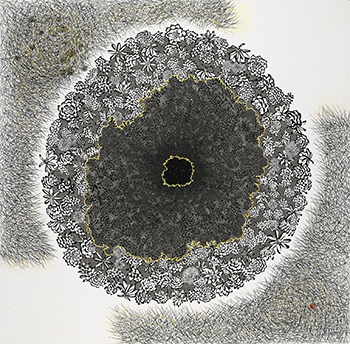
Artwork: Birth (2020). Medium: Korean traditional ink and gold ink on HwaSunJi (paper).
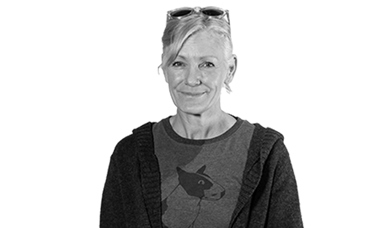
Oriah Rapley
Read moreOriah Rapley

Tell us a bit about yourself.
I am a full-time artist based in Taranaki. I began sculpting in stone in 2013 and now work in a variety of mediums including wood, steel, hard stone and bronze. I have pieces in national and international collections including the Sir James Wallace art collection and I have attended many symposiums and exhibitions throughout New Zealand. My work has been selected for many prestigious exhibitions including Sculpture in the Gardens at the Auckland Botanics, NZ Sculpture Onshore and Sculpture on the Peninsula. I have lived in Taranaki my whole life so I feel very privileged that even though I now work around New Zealand, Taranaki is still my base where I live and work.
What do you wish you knew about (your medium) before you got started?
If I only I knew the stone dust would wreak washing machines, I wouldn't have gone down this road!!
What’s the best piece of advice you would give to a young aspiring artist?
Have a good support crew and make sure someone will feed you. Keep going!
What would you like our audiences to take away/learn from looking at your artwork?
There are two messages in this piece of work. Firstly the bird is using her innate navigational skills to find safety for the land. The reflection of this action is to find the courage to trust and believe in yourself. The second part of the story is the visual that she is cradling the land in her wings which brings an awareness to the nurturing care the land needs.
Social/ Contact
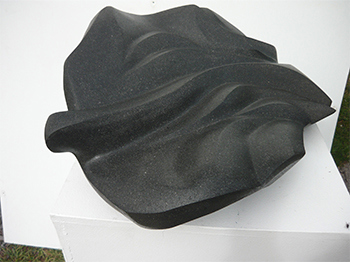
Artwork: Seeking Refuge (2020). Medium: Taranaki andesite.
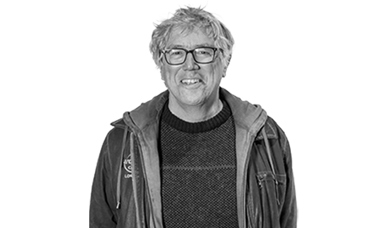
Paul Hutchinson
Read morePaul Hutchinson

Tell us a bit about yourself.
Born in Middlesbrough UK, immigrated with family to Canada in 1962, and grew up on Vancouver Island. I came to Taranaki in 1974.
What does your art aim to say to your audience?
I never have any 'message' to say with my art. Closer is one of a life-long series of self-portraits that I have painted over the years. The title alludes to the fact that I am inevitably that bit closer to the end of my life, but also I am trying to look and analyse what I see in the mirror that much more closely. Hopefully not in a narcissistic way. The puzzle of who we are, on a personal level, but more importantly on the wider human existential level, has always been the strongest driver for my art. I am interested in the whole genre and tradition of the self-portrait. In fact I would say that all art is ultimately self-portraiture. Who are we? Where did we come from and where are we going? We are closer. Closer to what…?
Who/what inspired you to become an artist?
My father used to paint watercolours. He encouraged me and my sisters to paint and draw from an early age. I can't remember ever not painting and I never really “decided” to become an artist. I always assumed I was one. It’s only comparatively recently that I have begun to question that presumption.
What’s the best piece of advice you would give to a young aspiring artist?
Don't take yourself so seriously. Be prepared for and welcome failure.
Social / Contact
Back Up A Glimpse of an Exhibition
You can visit Paul's studio by appointment
7266 Surf Highway, Okato, RD 37 New Plymouth 4381.
Phone: 06 7528126
PJHpainter@gmail.com
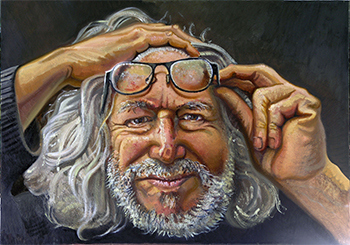
Artwork: Closer (2018). Medium: Oil on board.
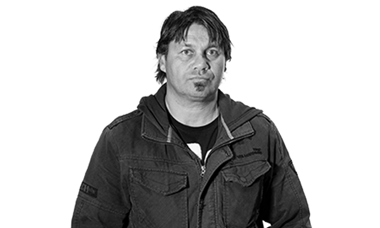
Reeve Hokopaura
Read moreReeve Hokopaura

Tell us a bit about yourself.
Ngā Rauru, Te Pakakohi, Ngā Ruahine Rangi.
Ko Aotea te Waka, Ko Taranaki te Maunga, ko Patea te awa, Ko Pakakohi te Iwi, ko Pariroa te Marae, Ko Taiporohenui te Whare, Ko Reeve Hokopaura ahau, Tena Kautou Katoa.
What inspired you to become an artist?
The freedom to express yourself through art. It can be beautiful, ugly, religious, satanic, informative, realistic, political or whatever form you want it to be.
How is the theme of Tuku iho represented in your artwork?
The Māhe form is the traditional fishing sinker of Māori and provides the sustenance for life, the Tiki is the first born form of life, the Turtle is the Kaitiaki that will always return home to its place of birth to die and become the spiritual Kaitiaki for the next generation of turtles to hatch.
Social/ Contact
Te Takapū o Rotowhio: The National Stone and Bone Carving School
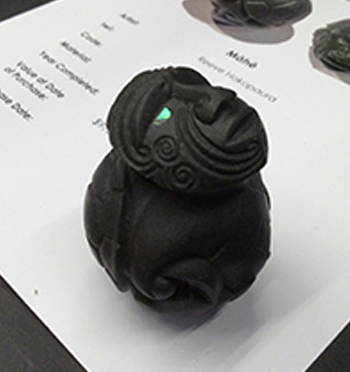
Artwork: Tiki-Turtle-Māhe (2019). Medium: Onewa (stone).

Renate Verbrugge
Read moreRenate Verbrugge

Tell us a bit about yourself.
I moved to Taranaki from my native Belgium in 1995 and four years later I was introduced to stone sculpture by Filipe Tohi. I became a member of Te Kupenga Stone Sculpture Society and am a product of this club. Twenty years and a lot of passion and hard work later, I have become a professional sculptor and have participated in over 50 symposia and numerous exhibitions worldwide. I love my life!
Who/what inspired you to become an artist?
My move to Taranaki and encounter with Filipe Tohi created the opportunity to try my hand at stone sculputre. Filipe is still my mentor today as is John McLean.
What are your tools of choice?
The 125 mm angle grinder and my favourite hammer and chisel.
The angle grinder makes it possible to remove a lot of stone quickly and I am sure Michelangelo would have used it as well if it would have been available to him in his time.
Social/Contact:
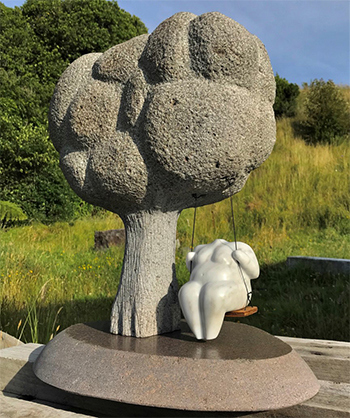
Artwork: Childhood Memories (2019). Medium: Taranaki andesite, Carrara marble, wood and string.
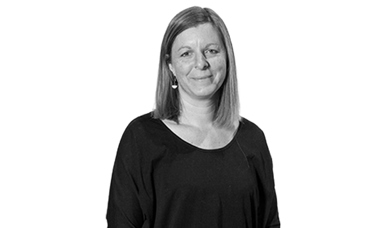
Reyna Henderson
Read moreReyna Henderson

Tell us a bit about yourself.
I was born and grew up in New Plymouth. I studied painting during secondary school and graduated from Massey University with a Bachelor of Technology in Product Development. After some years away from New Plymouth working and travelling I returned, and now live here with my husband and three children. I have spent the last 12 years as a full time mum, fitting in painting when I find the time. I work predominantly with acrylic paint and I have a passion for painting people. My work is influenced by my day to day life and my family.
How is the theme of Tuku iho (raising awareness of traditions that are passed down through generations) represented in your artwork?
Boy and Crab raises awareness of the concept and practice of Kaitiakitanga. The boy cradling the crab acts as a reminder of the importance of practicing our role as guardians of the earth; treating our environment with respect and care and ensuring that future generations understand the importance of continuing this tradition.
Who/what inspired you to become an artist?
For as long as I can remember I have always spent my free time drawing and painting. There have been many paintings and artists over the years who have been inspirational and influenced my style at the time, but it has to be the human face that inspires me the most to paint.
Social/ Contact
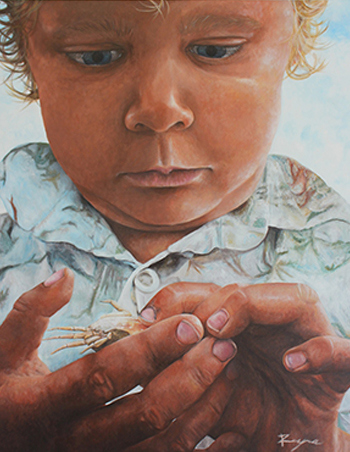
Artwork: Boy and Crab (2020). Medium: Acrylic on canvas.
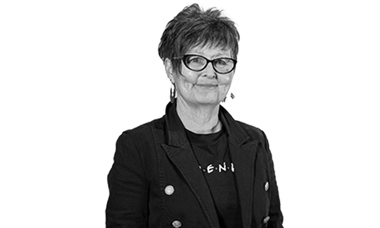
Rhonda Bunyan
Read moreRhonda Bunyan

Tell us a bit about yourself.
I began my working life as a journalist. As a stringer for a national newspaper I was required to take black and white photos and pop the film roll on a plane to travel to Wellington; no digital previews to ensure I had captured a good shot.
I graduated from film, and was delighted with the arrival of a one-hour photo service and then was over the moon with the arrival of the digital camera.
Whilst I am best-known for landscape photography, my passion is contemporary work where I play about with patterns, shapes and light to produce surreal and dream-like images.
What’s the best piece of advice you would give to an aspiring young artist?
Maintain your individuality, the part of your practice that sets you apart from others. Learn to stick up for yourself and your art. Love your art more than anyone else does.
What are your thoughts about the state of art in Taranaki? And who, in your opinion, is creating the most innovative or ambitious works in our region currently?
The Taranaki art scene is buzzing with life, intensity and innovation. I can't name one particular artist who is more innovative or more ambitious than another. I believe we all feed off collective energy and support from members of the creative and energetic arts community. Ambition and innovation don't always walk hand in hand. At the end of the day it is a personal journey. If we make art to please others we may be letting ourselves down.
Social/ Contact
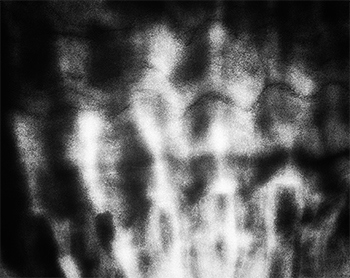
Artwork: Genetic Memory (2020). Medium: Photograph.
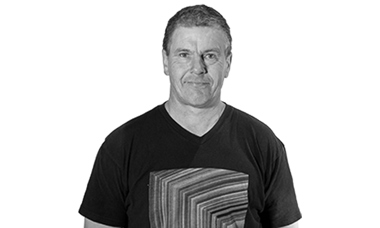
Richard Landers
Read moreRichard Landers

Tell us about yourself.
I have lived in Taranaki all my life. I've been involved in the glass industry since 1981, and a full time artist since 1987. I'm a founding member of the Art Glass Association of NZ, operating from my purpose-built studio and gallery in Omata.
I work with a range of glass applications including modern sculpture, kiln-formed glass, leadlight panels and stained-glass conservation. Many of my works are made from recycled materials.
I am tirelessly captivated by the effect of glass on light, and truly grateful for a wondrous material in glass.
How is the theme of Tuku iho (raising awareness of traditions that are passed down through generations) represented in your artwork?
Time management is something that has baffled mankind for all time.
Curiously it has the ability to sneak up on you without warning, to disappear before our very eyes, and of course appear to drag on as if standing still.
In this piece I appear to have captured time, but we all know that is a temporary belief.
What are your thoughts about the state of art in Taranaki? Who in your opinion is creating innovative or ambitious works in our region?
Exciting, on the move ….
We have so many innovative artists, especially female artists.
Anna Korver is my most inspirational artist in Taranaki. Innovative and very ambitious, at an international level.
What do you wish you knew about your medium before you got started?
That I'd need a bigger shed!
Social/ Contact

Artwork: Capturing Time (2020). Medium: Recycled dichroic glass.
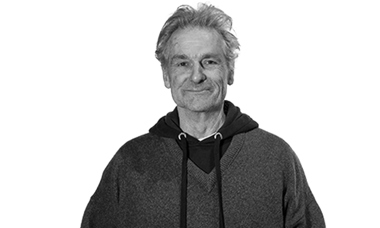
Roger Morris
Read moreRoger Morris

Tell us a bit about yourself.
Born Roxburgh Central Otago, 1954. My parents were a High Country Farmer and Kindergarten Teacher. Moved, Christchurch in 1966, there spending teenage, high school and early work years. NZ Police 1973-75. OE 1975 to 1980. Entered and quit Elam in 1981. Practicing artist since that date. Met the extraordinary Taranaki painter Marianne Muggeridge in Auckland, 1983. We moved to Taranaki to raise our children. Lucy born 1983. Myfanwy born 1991. Studio at Kapuni until 1988, then OEO for 10 years before living and working in Wellington 2001-2011 @Willis St Studio/Gallery. @OEO Road Studio/Home since 2011.
How is the theme of Tuku iho (raising awareness of traditions that are passed down through generations) represented in your artwork?
A practical example of the artist attempting to 'speak truth to power,' by messaging the viewer.
This communicative form, bypassing Official Narratives, has long been in the traditions of ART.
What are your tools of choice?
Brain, brush, hands, chisel, and ink roller.
Social/ Contact
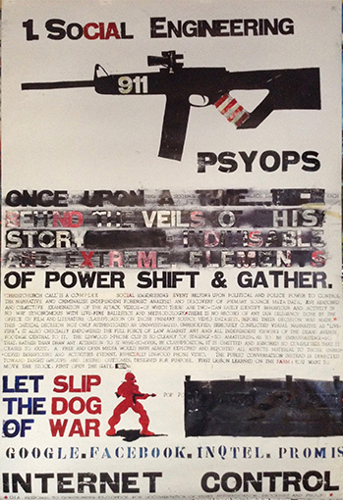
Artwork: Play Me (2020). Medium: Ink on paper.

Rosie Moyes
Read moreRosie Moyes

Tell us a bit about yourself.
I was born in the UK but I'm proud to call New Zealand my home. Taranaki has a natural beauty that is so inspiring. The beach is both energizing and invigorating, it is my place to take a deep breath and think.
How is the theme of Tuku iho (raising awareness of traditions that are passed down through generations) represented in your artwork?
The sand that is temporarily suspended in space and time gracefully drifts through the layers as the passing of knowledge filters through from person to person, generation to generation. Static sand grains are lodged as if withstanding the test of time, others glint shining out in space. Audio of waves washing over the sand, water trickling and the hum of wind buffering the environment as struggles in a lifetime.
Who/what inspired you to become an artist?
Photography is a passion. Capturing images, observing people and lifestyles, colours, shapes, patterns and the changing light in everyday life. Researching other photographers challenges my own thought processes.
Social/ Contact
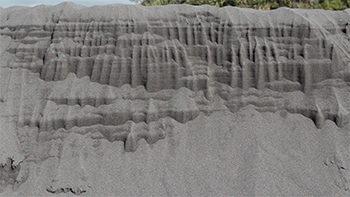
Artwork: Continuum (2020). Medium: Audio-digital.

Samantha Murphy
Read moreSamantha Murphy

Tell us a bit about yourself.
Kia ora! My name is Sam. I'm from Hawera but currently reside in Pātea. I'm a stay at home mother of two girls, aged 14 and 5. I also run a business from home selling poi and woven goods. I've been making poi for five years. I'm currently learning to weave with the Hetet School of Māori Art via online courses. Poi is my passion!
How is the theme of Tuku iho (raising awareness of traditions that are passed down through generations) represented in your artwork?
I use traditional techniques shown to me by our nannies of the Pātea Maori Club, so blessed am I to have this knowledge. I've then taken these skills and scaled down the materials to create these miniature poi.
What’s the best piece of advice you would give to a young aspiring artist?
It's the passion for what you do that will get you to where you want to be! I love Poi! #POI4DAYS #POI4LIFE
Social/ Contact
Poi Taranaki Aotearoa on Facebook
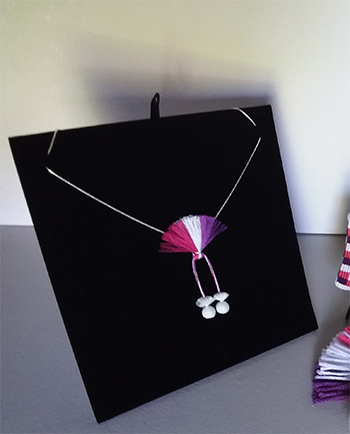
Artwork: Te Ao o te Poi (2020). Medium: Cotton, Glass, Sterling Silver.
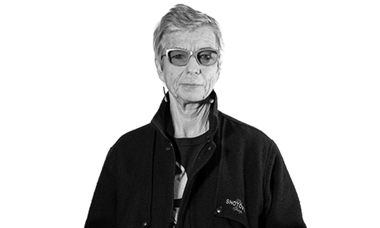
Sarah Buist
Read moreSarah Buist

Tell us a bit about yourself.
Born and bred in Hawera, left school to train at Wellington Hospital as a cytologist and histologist. Moved to Dunedin to work as a technician at the med school in a lab involved with tumour immunology research. Went to Dunedin Polytech to study ceramics tutored by Michael Trumic. Lived in London for 28 years before returning to Waitara.
How is the theme of Tuku iho (raising awareness of traditions that are passed down through generations) represented in your artwork?
When I was growing up every girl stitched, knitted and sewed as part of primary school life.
These skills learnt and maintained by women were relegated to what became known as the 'domestic' arts. By continuing to use those early learnt skills and presenting work for public viewing, I have shown that these traditional skills are alive and well.
What are your tools of choice?
In no particular order:
Paper, pencils, cutting knife, scissors, paint, ink, glue, rubber, ruler, paint brushes, wire, food colouring, inkpad, watercolours, found objects, books, old magazines, imagination, masking tape, cardboard, sketch-books (all sizes, ruled or plain, coloured or black & white), hot glue gun, embroidery hoop, needles, fabric, wool, old photos, photocopier/printer.
Social/ Contact
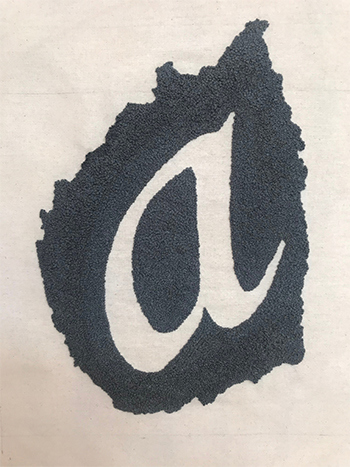
Artwork: a – the beginning (2020). Medium: Embroidery cotton on calico.

Suzan Kostanich
Read moreSuzan Kostanich

Tell us a bit about yourself.
Originally from Auckland, I have lived in New Plymouth now for over two years. I have been making textile art in some shape or form for over forty years. Utilising basic skills taught to me by my mother I have endeavoured to expand and develop these skills into a more modern context.
How is the theme of Tuku iho (raising awareness of traditions that are passed down through generations) represented in your artwork?
Per Tempus represents the countless generations of women who have “stitched” their way through life. Once a necessary skill, stitch has been relegated to the realms of “craft” through industrialisation. Using a simple running stitch in various ways demonstrates how the threads of lives can be brought together into a cohesive structure representing both the past and the future.
What is the most challenging part about working with your medium?
I am predominantly a felter and working in this medium can be physically challenging from laying down the initial fibres to coping with a shrinkage rate that requires constant re-evaluation. Creating surface design and retaining the tactility of the base cloth can also present a number of challenges as normal print techniques alter the nature of the fibre, hence the many hours of stitching.
Social / Contact
Pieces of my work can currently be found at Koru in Devon, New Plymouth; Artspot, Hamilton and Percy Thompson Gallery, Stratford. Email: suzank@xtra.co.nz
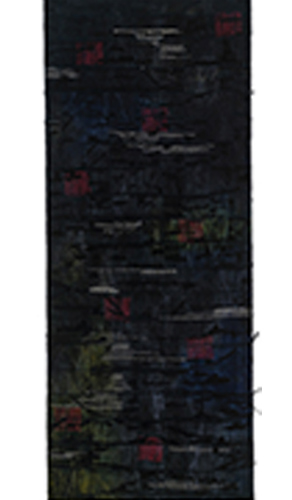
Artwork: Per Tempus (2020). Medium: Textile.
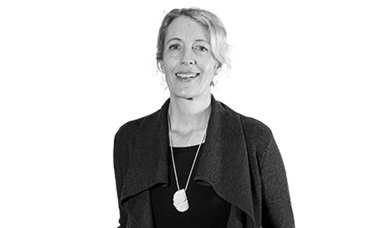
Tabatha Forbes
Read moreTabatha Forbes

Tell us a bit about yourself.
Dr Tabatha Forbes holds a doctorate in Fine Arts from Elam School, Auckland University. Her research and practice is primarily concerned with environmental perception/representation in the South Pacific with a primary interest in how we connect/disconnect from our natural habitats. Drawing on European botanical and natural histories, Tabatha brings a contemporary eco-art discourse to her practice. With a background in installation, performance and moving image her work retains an interest in the audience experience while attending to the business of 'thought provoking aesthetics'.
Who/what inspired you to become an artist?
I have never felt like I had a choice to be an artist or not, so I can't honestly say I was inspired to be an artist. That said, I have devoted a considerable amount of my life to the study of art and artists and the predominating thought is this: art plays a vital role in our lives by allowing us to shift the view on its subject. It may be enough just to create or represent something beautiful or it may be a deeper more conscious act of provoking the viewer into a different thought - even if just briefly. As Malcolm Miles puts it in his book on Eco-aesthetics (2014), "Art cannot save the planet or a whale; it can represent, critique and play imaginatively on the problem."
What would you like our audience to take away/ learn from looking at your artwork?
This is the first in a series of works that are an active exploration of the value of connection to land/home/history contrasted with the weird psychology of human denial that sits alongside the environmental polemic.
The light work All Good is accompanied by a small botanical painting of giant NZ kelp painted directly onto the plastic packaging that came with the light. The subject is inspired by a significant amount of dead kelp and plastic recently washed onto my local beach. Contemplating the importance of New Zealand's giant kelp forests to marine ecology this work signposts the threat of single species loss to a greater ecosystem on which we (and innumerable other species) are dependant.
“All good” has become an easy way of avoiding confrontation, often meaning it will be fine, it’ll all work out. In the context of this project, it's intention is unapologetically ironic.
Social / Contact
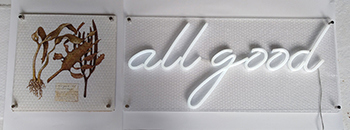
Artwork: All Good / NZ Giant Kelp (a response to marine temperature fluctuation & local extinction) (2020). Medium: LED light and acrylic on plastic.
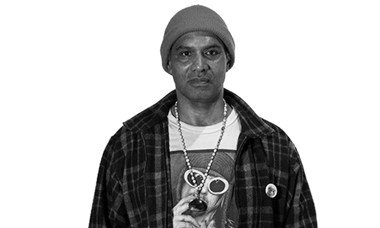
Thompson Kiwikiwi
Read moreThompson Kiwikiwi

Tell us a bit about yourself.
I come from the Bay of Islands, Whangaruru, East Coast of North Island, near Kororareka (Russell). Descendent of Ngāpuhi.
How is the theme of Tuku iho (raising awareness of traditions that are passed down through generations) represented in your artwork?
Tuku iho to me is all to do with ancestry and individual circumstances that mould the way you think and present yourself. This is due to our backgrounds, be it religion, race, economic, upbringing. It imparts our individuality – our gifts and talents.
What do you wish you knew about your medium before you got started?
Making mistakes is the best learning and sometimes you end up where you would have never gone.
Social / Contact
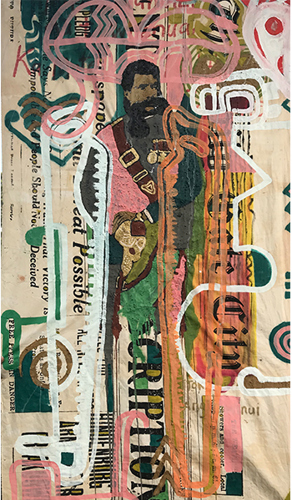
Artwork: Kaupapa or Kūpapa? (2020). Medium: Ochre and paint.
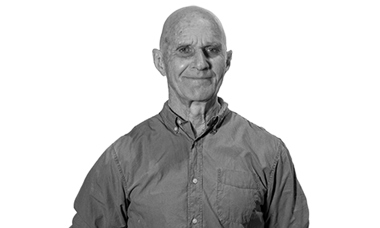
Tony Rumball
Read moreTony Rumball

Tell us a bit about yourself.
A Taranakian with a few years away in the 60’s and 70’s.
What’s the best piece of advice you would give to an aspiring young artist?
- Get a 6B pencil and a 1A5 school exercise book and quickly draw things around you; eg your feet, a pet, a face on TV, fruit or stacked dishes.
- Borrow books or google art images and visit galleries for techniques and inspiration.
How is the theme of Tuku iho (raising awareness of traditions that are passed down through generations) represented in your artwork?
Expressing a tender moment in the life of a dairy farmer. The painterly tradition. Pushing colours around on a canvas can be both enjoyable and salutary.
Who/what inspired you to become an artist?
Early on it would have been comics and book illustrations. Later it was Tom Kreisler’s tutoring.
Social/ Contact
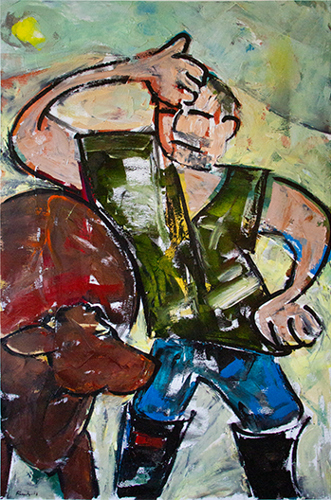
Artwork: Jobs Jobs Jobs (2019). Medium: Oil on stretched canvas.
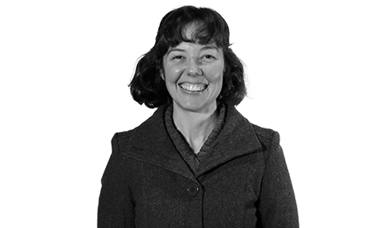
Zoe Tulleners
Read moreZoe Tulleners

Tell us a bit about yourself.
I'm from South Auckland and I have a diploma in 2D animation. I did some clean-up animation on bro'Town and got paid very little (paid per drawing). I've worked in libraries for 11 years.
I like to live the quiet life.
How is the theme of Tuku iho (raising awareness of traditions that are passed down through generations) represented in your artwork?
I think I have been influenced by religious/Christian art (like El Greco). I could say that I am following a stylistic tradition there.
And through ceramic as medium. Did I read somewhere that some of the oldest examples of art are made from clay?
What’s the best piece of advice you would give to a young aspiring artist?
If you create things in order to be cool or to make money or to be an Artist, it's not going to be so good. Not that ‘arting’ is 100% fun and stress free... just that you need to feel the process is worthwhile. What you're doing needs to mean something to you because otherwise you'll probably just quit at the first hurdle. Or even if you do become "successful" it will feel hollow and you might think, "I wonder what would have happened if I had done what I really wanted?" And you'll never know. There are easier ways to make money, be cool (if you have to!) and never know the answer to that question. That's what I think anyway.
It's super hard but try not to compare your work, life and personality to others (that you admire) because that will SHUT YOU DOWN. Do your own thing!
Social/ Contact
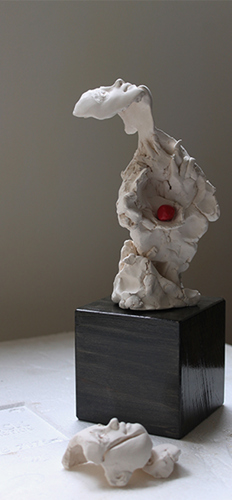
Artwork: Cling Softly (2020). Medium: Ceramic.
Was this page useful?
Thank you.